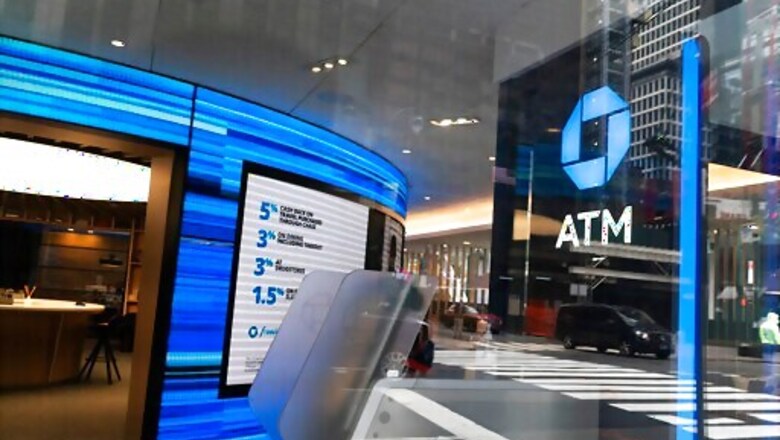
views
CHARLOTTE, N.C.: The pandemic and recession arent over by a long shot, but banks are feeling optimistic enough to start taking potentially bad loans off their books and move them back into the good pile.
The financial performance of the big U.S. banks has improved from earlier in 2020, when the virus pandemic walloped the global economy. JPMorgan and Wells Fargo saw fourth quarter profits rise; Citigroups profit fell in the last quarter of 2020, but increased from the third quarter.
The three banks have a more positive, though cautious outlook for the economy, which was reflected in an accounting maneuver each employed that contributed significantly to their better results.
JPMorgan reported a record profit of $12.14 billion, up from a profit of $8.52 billion a year earlier. Roughly a quarter of that profit $2.9 billion came from JPMorgan releasing some of the funds it had set aside last year to cover potential loan losses caused by the pandemic and subsequent recession. Citigroup had a similar story, releasing $1.5 billion of its loan-loss reserves that it had set aside earlier last year. Wells Fargo released a modest amount of money from its reserves less than $200 million.
Still, those amounts are just a fraction of the tens of billions of dollars into their so-called loan-loss reserves to cover potentially bad loans in the first months of the pandemic. Banks are required to set aside loans that may become unpayable on their balance sheet to show whether they have enough money to meet depositors and regulators needs.
This largely had to do because millions of customers and businesses who were financially fine in February 2020 were suddenly in deep trouble in March 2020, as local and state governments shut their economies down to combat the early stages of the pandemic.
But trillions of dollars worth of government stimulus and the reopening of businesses in many parts of the country has resulted in less financial carnage than what bank executives and investors initially expected. Notably the Paycheck Protection Program, which helped businesses cover basic expenses like payroll, helped keep some businesses afloat.
The fear of a wave of COVID-related bankruptcies has not occurred, said Octavio Marenzi, CEO of Opimas, a capital markets management consultancy firm.
In releasing funds from loan-loss reserves, the banks cited the improvement in the economy. Though still not fully recovered from the shutdowns of March and April, the economic picture is better than it was six or nine months ago. And with mass vaccination efforts now underway, banks are feeling a bit better on where things stand.
But theres still a significant degree of uncertainty when it comes to the banks. JPMorgan still has more than $30 billion tied up in its loan-loss reserves, and banks like Citi and Wells have similar figures on their balance sheets.
Thank God for the vaccine, said Jamie Dimon, CEO of JPMorgan Chase, in a call with reporters on Friday. But the same breath, Dimon said that all bets are off on how the U.S. economy may go if the vaccine isnt as effective as expected.
Disclaimer: This post has been auto-published from an agency feed without any modifications to the text and has not been reviewed by an editor
Read all the Latest News, Breaking News and Coronavirus News here




















Comments
0 comment